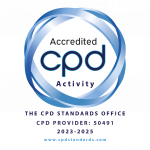Team Conflict
Team Conflict

Have you ever been a part of such a chaotic work group where the leadership is unclear and ineffective?
Nobody seemed to have a clear understanding of what needed to be done or how to accomplish it. Each person had their own unique idea on how to achieve the goal, and everyone was eager to make their idea heard and accepted. This resulted in a cacophony of voices, leading to confusion. Some individuals were assertive and vocal, while others adopted an indifferent attitude. Communication became scattered, with emails sent at all hours. The project became stagnant as someone failed to provide the necessary materials or meet deadlines, which led to blame being dished out left, right and centre for the experienced delays. This chaotic situation culminated in a frantic rush to complete everything with the deadline looming and team members under extreme pressure to deliver.
I often experienced this type of scenario in High School and College when working on team projects. We had a small amount of time to complete the task, everybody approached the task in a different way, the communication was either too much or too little. Everyone had the same role but with no clear expectations, no one really knew what to do, and the boundaries of responsibilities were not clearly defined. Different personality types added to this mix is another whole conversation for another day.
If you have encountered similar situations, how did you manage to overcome them?
Let’s take a moment to reflect on the origins of these differences.
Team conflicts can arise from various causes and sources, including:
Personality differences: Each team member brings their unique personality traits, perspectives, and preferences, which can sometimes clash.
Differences in work approach: Individuals may have diverse ways of approaching tasks, problem-solving, and making decisions, leading to conflicting approaches within the team.
Lack of information or communication: Insufficient sharing of information, ineffective communication, or misunderstandings can give rise to conflicts among team members.
Role ambiguity: Unclear roles, responsibilities, or overlapping boundaries can create confusion and conflict within the team.
Environmental conflict: External factors such as limited resources, time constraints, or organizational changes can contribute to tensions within the team.
While it’s not desirable to have constant conflict within a team, it is crucial to foster diverse opinions and perspectives. These differences act as fuel that ignites progress and innovation within the team.
Imagine going to work every day with someone who is an exact copy of yourself, always agreeing with everything you say. While it might sound appealing at first, it would limit the potential for growth and improvement.
As a leader, how can you strike a balance between allowing individuals to freely express their thoughts and ideas while avoiding excessive conflict?
Below are some helpful suggestions:
Personality differences – appreciate individual differences and find common interest, also encourage this within your team
Differences in work approach- Learn from others working styles and view them as an opportunity for growth and learning
Lack of information or communication – Provide structured processes of communication and foster an environment where each team member feels safe to contribute.
Role ambiguity: – Give clarity, define roles and responsibilities, provide training, support and coaching
Environmental conflict: Identify the stress factors and try to remove them.
If you want to know more about how you can deal with team conflict click the HERE to our ONLINE course Effective Team Leadership, the course is complete with engaging and thought provoking exercises to help you gain knowledge and get more comfortable when conflict arises.






